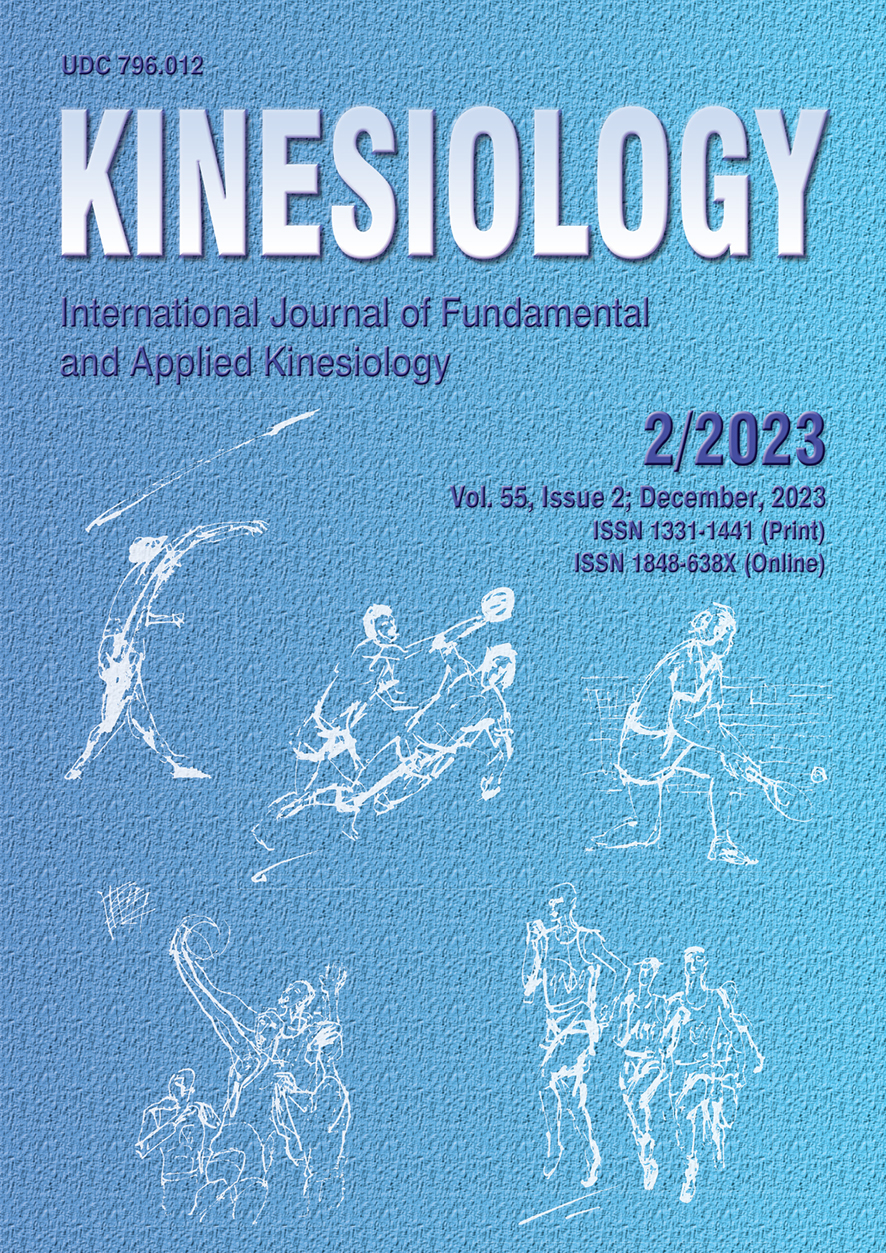LOW-LOAD RESISTANCE EXERCISE COMPLETED TO VOLITIONAL FAILURE DECREASES PAIN PERCEPTION POST-EXERCISE IN FEMALES AND MALES
Keywords:
Exercise-induced hypoalgesia, pain pressure threshold, blood flow restriction, muscle pain, resistance exercise, pain measurementAbstract
Exercise-induced hypoalgesia (EIH) is the acute pain reduction post-exercise. Typically, high-intensity and/or long-duration exercise is required to elicit EIH. Alternatively, low-load resistance exercise with blood flow restriction (LL+BFR) may elicit EIH. However, there is conflicting evidence regarding the necessary repetitions and volume load. This study evaluated EIH after 75 repetitions (1×30, 3×15) (BFR-75) and four sets to volitional failure (BFR-F) protocols. Twenty-six participants completed unilateral knee extensions at 30% of maximal strength using a BFR-75 and BFR-F protocol. Pain pressure threshold (PPT) of the rectus femoris was assessed before and after exercise. Repetitions completed, volume load, occlusion time, and PPT were analyzed. Participants completed more repetitions (91.4±30.5), volume load (5,204.9±2,367.0 Nm), and had a longer occlusion time (345.8±76.2 seconds) during BFR-F compared to BFR-75 (73.2±3.7 repetitions, 4,451.1±1,498.1 Nm, 300.5±52.2 seconds, respectively). Collapsed across sex, PPT increased from pre- (3.24±1.91 kgf) to post-exercise (3.76±2.27 kgf) for BFR-F but not for BFR-75 (3.51±1.67 to 3.68±2.04 kgf). The results indicated that BFR-F, but not BFR-75, elicited EIH, as assessed by an increase in PPT. Lower loads used during LL+BFR may be a clinically relevant alternative to high-intensity and/or long-duration exercise in populations that may not tolerate high-intensity or prolonged exercise to induce EIH.
Key words: exercise-induced hypoalgesia, pain pressure threshold, blood flow restriction, muscle pain, resistance exercise, pain measurement
Downloads
Published
Issue
Section
License

This work is licensed under a Creative Commons Attribution-NonCommercial 4.0 International License.
At Faculty of Kinesiology we recognize that access to quality research is vital to the scientific community and beyond. Kinesiology is non-profit journal and all costs of publishing and peer review process are covered by the publisher itself or other funding sources like Ministry of Science and Education of the Republic of Croatia. Full text papers are also available free of charge at http://hrcak.srce.hr/kineziologija. There are no restrictions on self archiving of any form of paper (preprint, postprint and publisher's version).
Articles are distributed under the terms of the CC BY - NC 4.0
Kinesiology does not charge any fees to authors to submit or publish articles in our journal.


